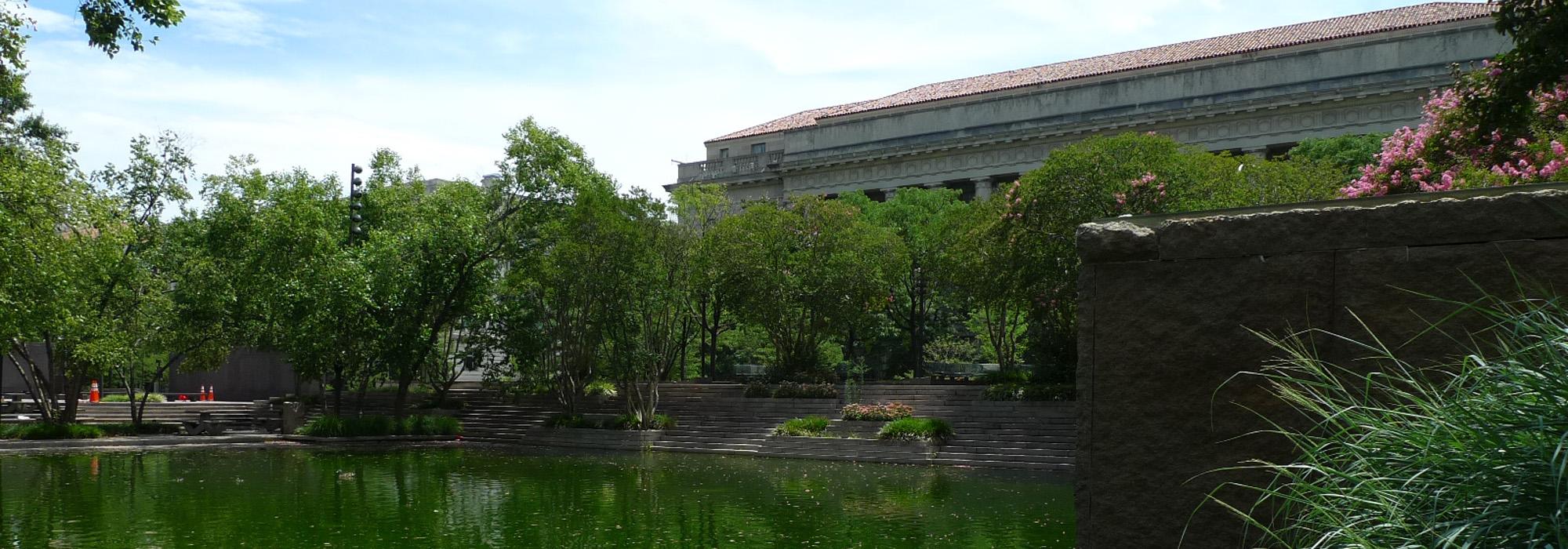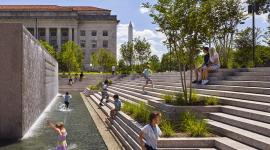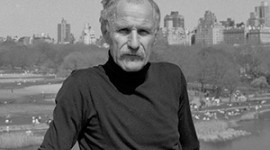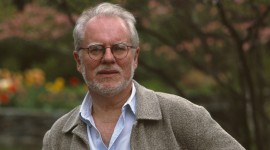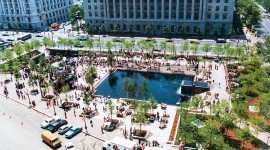World War I Centennial Commission Selection of Weight of Sacrifice by Joe Weishaar & Sabin Howard Could Lead to Demolition of Pershing Park
Media Contact: Nord Wennerstrom | T: 202.483.0553 | M: 202.225.7076 | E: nord@tclf.org
Decision made despite the National Park Service’s determination that Pershing Park is eligible for listing in the National Register of Historic Places
Washington, D.C. (January 26, 2016) – The World War I Centennial Commission today announced that The Weight Of Sacrifice by Joe Weishaar & Sabin Howard, selected from among five finalists, is the winner as a proposed new national war memorial in Washington, D.C. Should the design be executed as proposed, it would result in the demolition of Pershing Park, which was designed by landscape architect M. Paul Friedberg with a planting plan by landscape architects Oehme, van Sweden and which National Park Service (NPS) has determined eligible for listing in the National Register of Historic Places. The decision comes despite reservations and concerns registered by the Commission of Fine Arts (CFA), the National Capital Planning Commission (NCPC) and the District of Columbia State Historic Preservation Office (DCSHPO), all of which must approve the project. More recently, Pulitzer Prize-winning Washington Post critic Philip Kennicott wrote: “All five of the designs obliterate the Friedberg park, rather than building on it,” adding that, “None of the proposals, selected in July from 360 entries, rises to a standard the commission should champion.” Commissioner Thomas Moe from Ohio, in the course of a conference call announcing the decision, panned the winning design as “unremarkable.”
In a January 20, 2016 press announcement, Commission spokesperson Chris Isleib wrote of the design competition process: “The five design teams consulted with representatives from the Commission, the National Park Service, the U.S. Commission of Fine Arts, the National Capital Planning Commission, and other stakeholders to develop and refine their design concepts. The designs must must (sic) meet a number of criteria related to design merit, site considerations, environmental impact, historical (sic) preservation, sustainability, and cost. The designers submitted their final concepts in December 2015.”
“The World War I Centennial Commission did meet with stakeholders, and they also knew that Pershing Park would likely be eligible to the National Register, which would restrict the impact on the park, but they never really listened,” said Charles A. Birnbaum, president and CEO of The Cultural Landscape Foundation (TCLF). “Instead, they opted for conflict over collaboration.”
In numerous public presentations Commission Vice Chair Edwin Fountain and competition manager Roger Lewis have stated, “all [design] options are on the table,” from the restoration of Pershing Park to outright demolition. However, the competition design guidelines were biased against rehabilitation of the existing site. More importantly, Mr. Fountain and Mr. Lewis frequently denigrated Pershing Park, with Mr. Fountain stating in a December 16, 2015 meeting attended by members of the CFA, DCSHPO, NPS and others that, “It almost seemed an affront to preserve the bones of the Friedberg design” and stated that it was not the Memorial Commission’s job to “restore the park.” At one point he declared that if a preservation approach is required, “speaking personally...we’ll have to decide if we move forward.”
Pershing Park was added to TCLF’s Landslide list of nationally significant works of landscape architecture that are threatened and at-risk. The park is also featured in the current exhibition at the National Building Museum, The New American Garden: The Landscape Architecture of Oehme, van Sweden.
Here are links to hi-res images of Pershing Park showing its condition in earlier years when it was better maintained and in 2015:
Pershing Park Washington, DC, undated Credit: Photograph © Volkmar Wentzel, undated, courtesy The Cultural Landscape Foundation
Pershing Park Washington, DC, 2015 Credit: Photograph © Brian K. Thomson, 2015, courtesy The Cultural Landscape Foundation
About The Cultural Landscape Foundation
The Cultural Landscape Foundation (TCLF), founded in 1998, is a non-profit foundation that provides people with the ability to see, understand and value landscape architecture, its practitioners, and our shared landscape legacy in the way many people have learned to do with buildings and their designers. Through its website, lectures, outreach and publishing, TCLF broadens the support and understanding for cultural landscapes nationwide. TCLF makes a special effort to heighten the awareness of those who impact cultural landscapes, assist groups and organizations working to increase the appreciation and recognition of cultural landscapes, and develop educational tools for young people to better connect them to their cultural landscape environs.
# # #



